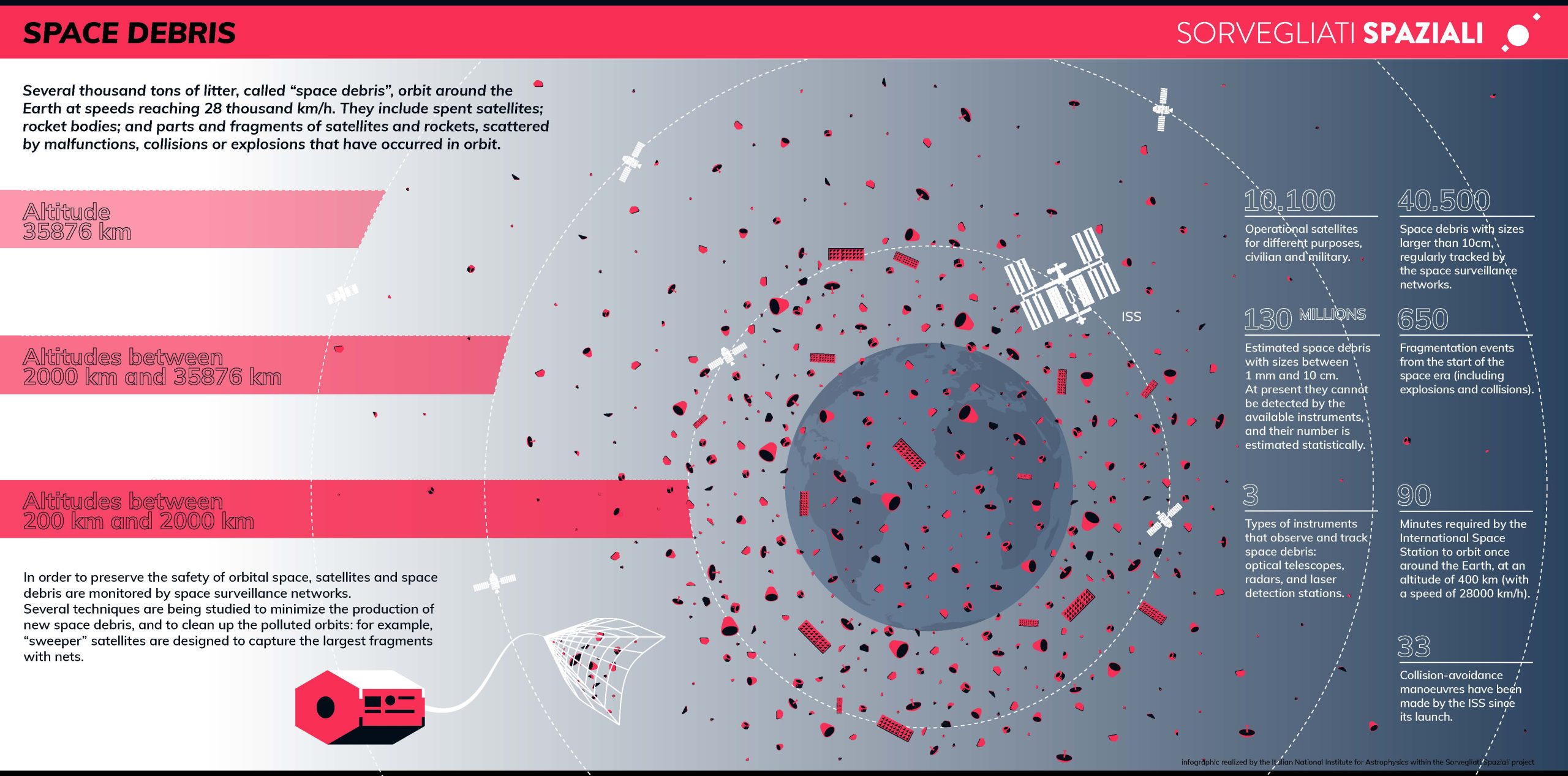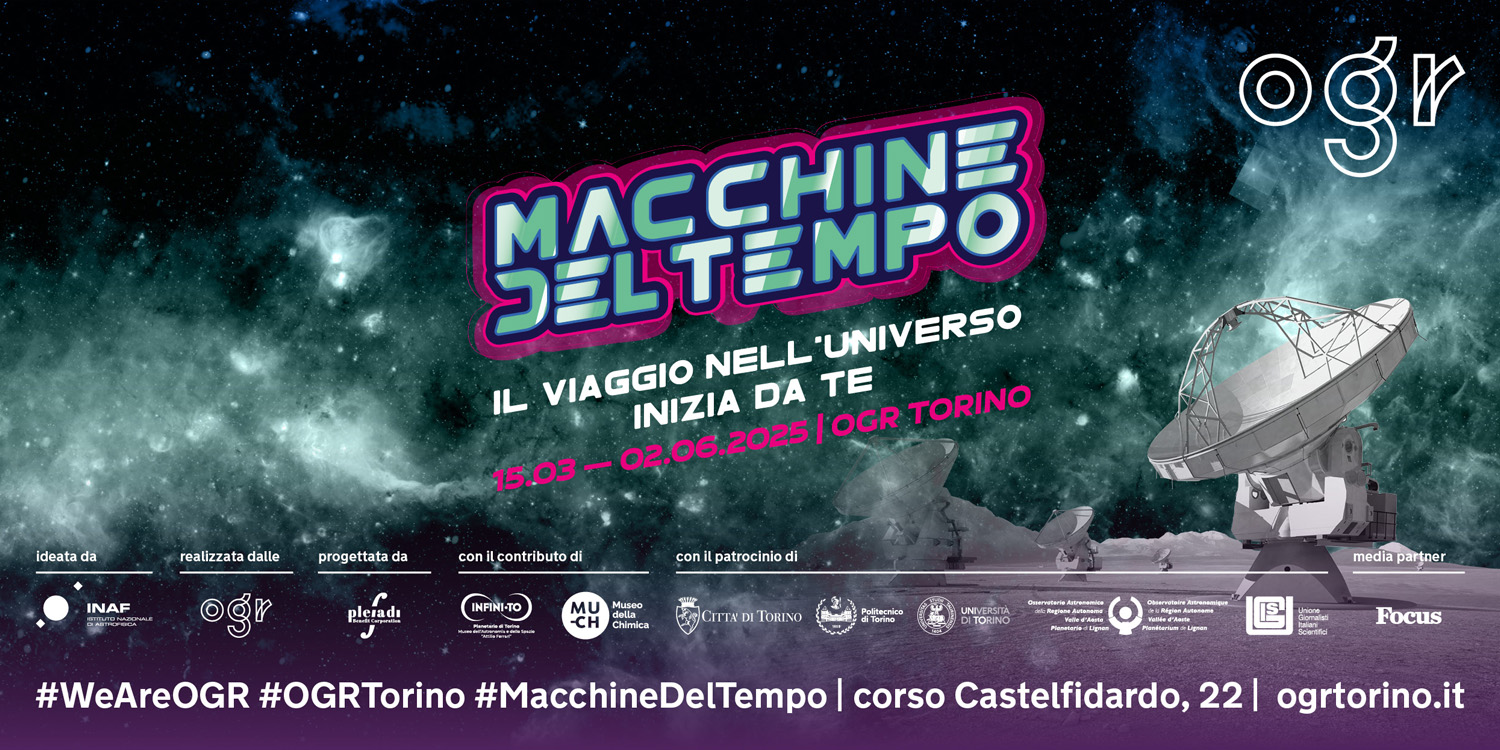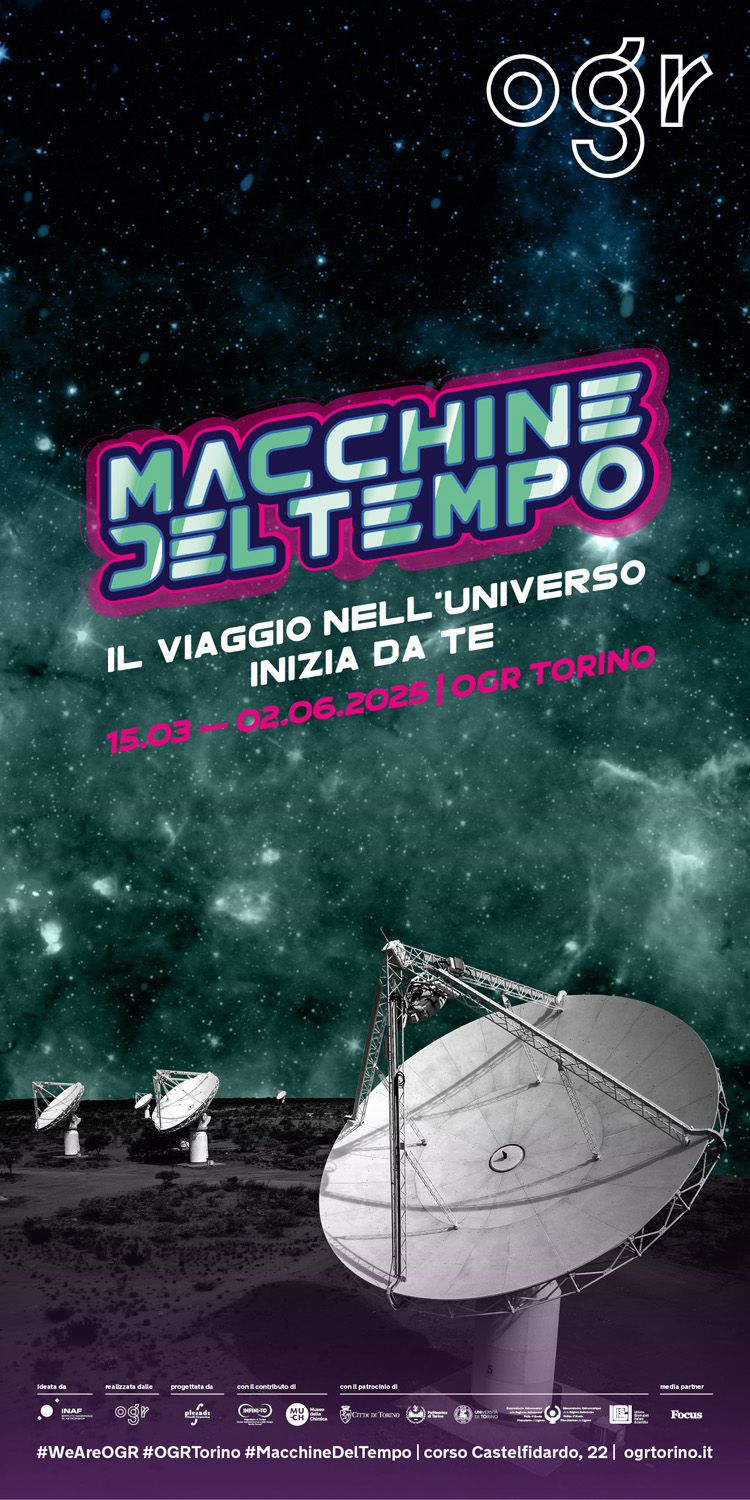Space
debris
Orbits around the earth are crowded with millions of fragments which we call “space debris”. Travelling at 27000 km/h, they can damage operational satellites, collide with other debris creating new fragments, re-enter the atmosphere in an uncontrolled way, or put astronauts in danger.
As the commercial exploitation of space rapidly increases, many agencies across the world are seeking solutions to mitigate the problem. On one hand, space debris is carefully monitored; on the other hand, methods are being devised to minimize the creation of space debris, and to remove what is already present.
Download the infographic by clicking here.
ESA calls for a global zero space debris policy
Space activities have now entered fully into the global economic perspective. This can also be seen from the fact that
Report a sighting!
Have you seen one or several bright streaks in the sky? Do you think you have seen the reentry of
Specifically
The human space age officially started on 4 October 1957, when the Soviet Union launched in orbit the first artificial satellite, Sputnik 1. Since then almost 12000 satellites have been put in orbit around the earth, for purposes such as telecommunications, meteorology, or satellite navigation. We depend on them for military security, and for the protection of economies, societies and citizens. But with the launches we have also unwillingly polluted the orbital space with much waste: about 6500 tons of detritus collectively defined as “space debris” have been added to about 2000 “useful” tons of operational satellites.
These are objects of various nature and sizes: spent launch stadia, parts of satellites, fragments (such as bolts, paint flakes, etc.) produced by malfunctions, collisions, or explosions, as well as decommissioned satellites which have not re-entered the atmosphere.
At this time, about 5000 “whole” satellites (each typically weighing several tons) are orbiting around the earth. About 2/3 are operational, and the remaining 1/3 are decommissioned or out of control. These satellites share space with more than 20000 pieces of space debris larger than 10 cm, which are being regularly monitored by the space surveillance networks. But the amount of objects in orbit is much larger. Recent statistical estimates tell us that space debris with sizes between 0.1 and 10 cm are about 130 million.
These sizes are too small for our current ground-based monitoring capabilities, and we are forced to use statistical methods to extrapolate their number and obtain an estimate of the total population of objects in orbit. One space mission in particular, NASA’s Long Duration Exposure Facility (LDEF) was dedicated specifically to this kind of evaluation, by releasing a target satellite from the Space Shuttle in 1984, and retrieving it in 1990 for analysis on earth.
Space debris can be a serious problem for the operational life of satellites, and for space travel. Whether small or large, any object has to travel at a very high speed (up to 28000 km/h) to stay in orbit. Space debris can therefore damage operational satellites, collide with other debris creating new fragments, re-enter the atmosphere in an uncontrolled way, and be a danger for astronauts.
With the fast expansion of the commercial exploitation of space, many institutions in the world are now seeking solutions to mitigate these problems. Strategies are being studied to reduce the production of space debris to a minimum, by carefully planning the last phases of a satellite’s life; and to clean up congested orbits with “sweeping” satellites, which deploy nets to automatically capture the largest debris.
At this time, however, the best way to preserve the safety of orbital space is by monitoring satellites and space debris.
Systems for space surveillance and tracking (SST), in particular those of the U.S. Department of Defense (NORAD), Russia’s OKNO and, more recently, those of the European Space Agency and of the European Union (EUSST), carry out intense ground-based monitoring activities of space debris with radars, telescopes, and laser reconnaissance stations. These instruments provide observations from low-earth orbits (LEO, 200-2000 km in altitude) to the geostationary orbit (35786 km in altitude). The data are used to update the status of space traffic and evaluate the risk of collisions in orbit, of uncontrolled re-entries in the atmosphere (with an estimate of the possible time and place of impact), and to analyze the dispersion of new debris created by collisions or explosions.
Since 2015, Italy has been contributing to the monitoring of space objects within the EUSST (European Union Space Surveillance and Tracking) support framework, which was established in 2014 and is based at this time on a Consortium formed by seven* member States (France, Germany, Italy, Poland, Portugal, Romania, and Spain) and by the European Union Satellite Centre (SatCen), located at Torrejon, near Madrid (Spain).
Italy is represented in the consortium by the Italian Space Agency, who signed a Framework Agreement on the EUSST programme in 2015 with the National Institute for Astrophysics (INAF) and with the Ministry of Defense. A Coordinating and Directing Body (OCIS) of the European Commission was thus established, to coordinate the activities foreseen within the EUSST on the national scale.
EUSST uses about 60 sensors (radars, telescopes and laser detection stations), distributed all over the world. Nine of these are managed by Italy, and operate under the coordination of the Italian Space Surveillance and Tracking Operation Center (ISOC), which is managed by the Air Division of Aeronautical and Space Experimentation (DASAS) of the Italian Air Force, at the base of Pratica di Mare (near Rome). ISOC processes and analyses the data in collaboration with SatCen.
INAF’s role
INAF contributes to EUSST with 3 sensors: the Norther Cross radiotelescope close to Medicina (BO) and the G.D. Cassini telescope in Loiano (BO) belong to the University of Bologna and are managed by INAF; the Sardinia Radio Telescope (SRT), near Selargius (CA) belongs to INAF.
The Northern Cross and SRT operate as the receiving parts of two bistatic radars, BIRALES and BIRALET respectively, both receiving from a transmitter located in a military base in Sardinia. They observe space objects up to an altitude of 1000 km (Low Earth Orbit). The G.D. Cassini telescope observes instead at higher altitudes, from the 2000 km of Medium Earth Orbits (MEO) to the geostationary orbit at 35786 km.
In addition, on the basis of an ASI-INAF agreement, the Teramo-Normale Telescope (TNT) and the telescopes at INAF’s Campo Imperatore Astronomical Station (AQ) are used to analyse the components of geostationary debris, by comparing their reflected light with lab spectra of the main materials used in satellites.
Upgrades have been implemented or are being planned at the Northern Cross, Cassini telescope, and at the Campo Imperatore telescopes, to increase their power to observe satellites and debris, and therefore optimize the scientific yield of the observational campaigns.
For further informations take a look at Friends’ sites.


